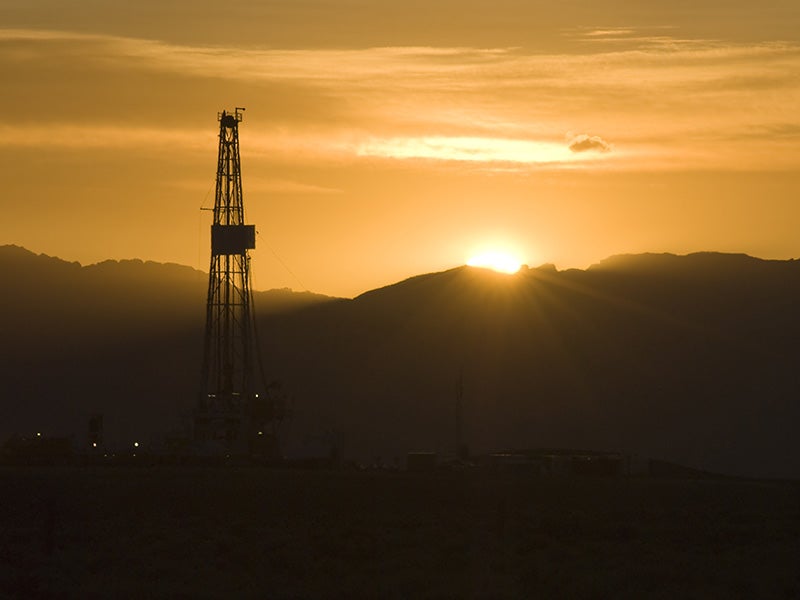Landowners Seek Air, Water and Land Zoning Regulations, Protection from Unregulated Oil Drilling
Carbon County landowners appeal decision to reject zoning effort
Contact
Today, seven landowners filed a legal challenge in state district court to the Carbon County Commission’s rejection of their petition for land use regulations to protect their private properties from the harmful effects of oil and gas drilling.
The landowners collectively seek to establish the “Silvertip Zoning District” to cover nearly 3,000 acres of agricultural land north of Belfry, Montana. Creation of the district is the first step to establish solid protections for land, air and water quality, giving landowners an essential voice in the development of oil and gas on their properties.
Although some oil and gas development has occurred in Carbon County for decades, the Silvertip landowners were pressed to take action in October 2013 after Energy Corporation of America’s (ECA) CEO John Mork announced plans to hydraulically fracture 50 wells along the Beartooth Front—an area that includes Carbon and Stillwater counties in Montana and forms the northeastern flank of the greater Yellowstone ecosystem. Mork boasted that ECA hoped to bring “a little bit of the Bakken” to the Beartooths.
Earthjustice Photo
The landowners collectively seek to establish the “Silvertip Zoning District” to cover nearly 3,000 acres of agricultural land north of Belfry. Creation of the district is the first step to establish solid protections for land, air and water quality. (Download image for media use)
“State and federal laws don’t protect us from the worst impacts of oil and gas drilling,” said farmer Bonnie Martinell, one of the plaintiffs. “There are few requirements for protecting our water or how far drilling must be set back from residences. This means we have to take local action to protect our way of life and our livelihoods.”
Montana law empowers landowners to initiate the development of zoning regulations for the protection of their land and community by petitioning their county commissioners to establish planning and zoning districts.
“We as landowners, ranchers and farmers have seen the destructive impacts of oil development in this area and we asked the County to let us safeguard our property and livelihoods by enacting these basic protections,” said Martinell. “Citizen zoning is our only tool to protect our land and we are just trying to use that right given to us under state law.”
Earthjustice, an environmental nonprofit law firm, is representing the Silvertip landowners in their appeal. Energy Corporation of America is named as a defendant in the lawsuit along with the Carbon County Commissioners.
“Across the country, individuals and local governments are responding to the lack of state and federal leadership on the impacts of oil and gas development by demanding local control,” said Earthjustice Attorney Jenny Harbine. “This lawsuit is about allowing the Silvertip landowners to protect their land and their livelihoods when no one else will.”
The Silvertip landowners have lobbied extensively before the Montana legislature and the state Board of Oil and Gas Conservation for protections from the adverse effects of inadequately regulated drilling. Those government bodies failed to take action. In Montana, five bills were introduced during this state legislative session that would have enacted basic safeguards on oil and gas development, but all five were tabled in committee and are unlikely to receive a full vote in either house.
Oil and gas drilling in shale formations such as the formation underlying Silvertip area is commonly accomplished through hydraulic fracturing, or “fracking,” which involves pumping millions of gallons of chemical-laced water and sand into the ground to release trapped oil and gas. After the well is fractured, substantial quantities of this contaminated water—which contains high concentrations of salt, drilling chemicals, heavy metals, and radioactive material—returns to the surface where it is frequently stored in open containment ponds that pose substantial risks of leaks or failure.
As much as one-third of the contaminated water from the fracturing can remain underground after drilling is completed, threatening pollution of soil and groundwater. Numerous chemicals used in fracking are linked to serious human health problems, including respiratory distress, rashes, convulsions, organ damage, and cancer. However, federal and Montana law provide only limited restrictions on the use of these dangerous chemicals and do not require pre-drilling notification to adjacent landowners or the public or mandate surface and ground water testing to detect contamination.
Although interest in large-scale oil and gas development in Carbon County has waned as oil prices dropped in recent months, Martinell said the zoning designation remains necessary to protect landowners when oil and gas development picks up again.
“Through this process, we’ve learned that developing regulations takes time and protections cannot be put in place over night. If we’re going to get this right, now is the time to act.”

Additional Resources
About Earthjustice
Earthjustice is the premier nonprofit environmental law organization. We wield the power of law and the strength of partnership to protect people's health, to preserve magnificent places and wildlife, to advance clean energy, and to combat climate change. We are here because the earth needs a good lawyer.